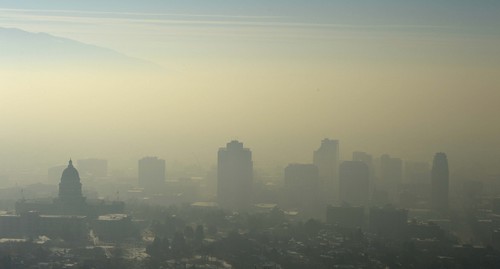This is an archived article that was published on sltrib.com in 2014, and information in the article may be outdated. It is provided only for personal research purposes and may not be reprinted.
New research shows suicides in Salt Lake County rise during periods of elevated air pollution, although these preliminary findings remain too hazy to determine what role nasty air plays when people decide to end their lives.
University of Utah psychiatrists are testing a hypothesis that the incidence of suicide increases with fine particulate pollution counts, which often soar on the Wasatch Front during wintertime inversions.
Researcher Amanda Bakian, however, was surprised by what the data have thus far shown. Air pollution spikes are associated with increased suicide risk not so much in the winter, but in spring and fall, seasons when Utah's air is on average its cleanest and pollution spikes are not severe.
Year-round, Bakian found, the odds of committing suicide were 20 percent higher for county residents exposed to increased levels of nitrogen dioxide in the three days before they died. The odds were 5 percent higher when there were increased levels of fine particulate, or PM2.5.
But in the spring months, when the daylight hours are lengthening, the suicide odds went up 28 percent for PM2.5 spikes and 34 percent for nitrogen dioxide.
"There are many risk factors for suicide, including biological, chemical and physical ones," said Bakian, an assistant professor of psychiatry. "While our study doesn't prove that air pollution causes someone to commit suicide, it suggests that higher levels of pollution might interact with other factors to increase the risk for suicide."
She suspects one of those other factors could be allergies triggered by pollen levels that are higher in the spring and fall.
Bakian noted that around the world, especially in temperate regions, suicide rates are highest in spring and lowest in winter.
"It's a little bit counterintuitive," she said.
Her latest findings are based on an analysis of more than 1,500 suicides in Salt Lake County during a 11-year window ending in 2010.
Bakian presents her findings Friday at the annual conference of the American Association of Suicidology in Los Angeles. Her study is under peer review for publication in the American Journal of Epidemiology.
Bakian is among six researchers who garnered seed grants this year from the U.'s Program for Air Quality, Health, and Society.
These ongoing studies explore the relationship between air quality and numerous aspects of public health, such as birth outcomes and pulmonary function.
Bakian said studies have tied increased suicide risk to particulate pollution in Asia, but the question has yet to be explored in the United States.
Bakian will use the research grant to fine-tune her study to include socioeconomic levels and other demographic data of those who committed suicide.
Her team will also determine whether those who committed suicide were being treated for medical and psychiatric issues, information that is recorded in the U.'s Utah Population Database.
With the help of the state Medical Examiner's Office, Bakian will also expand her study to cover every Utah suicide statewide from Jan. 1, 2000, to the present.



